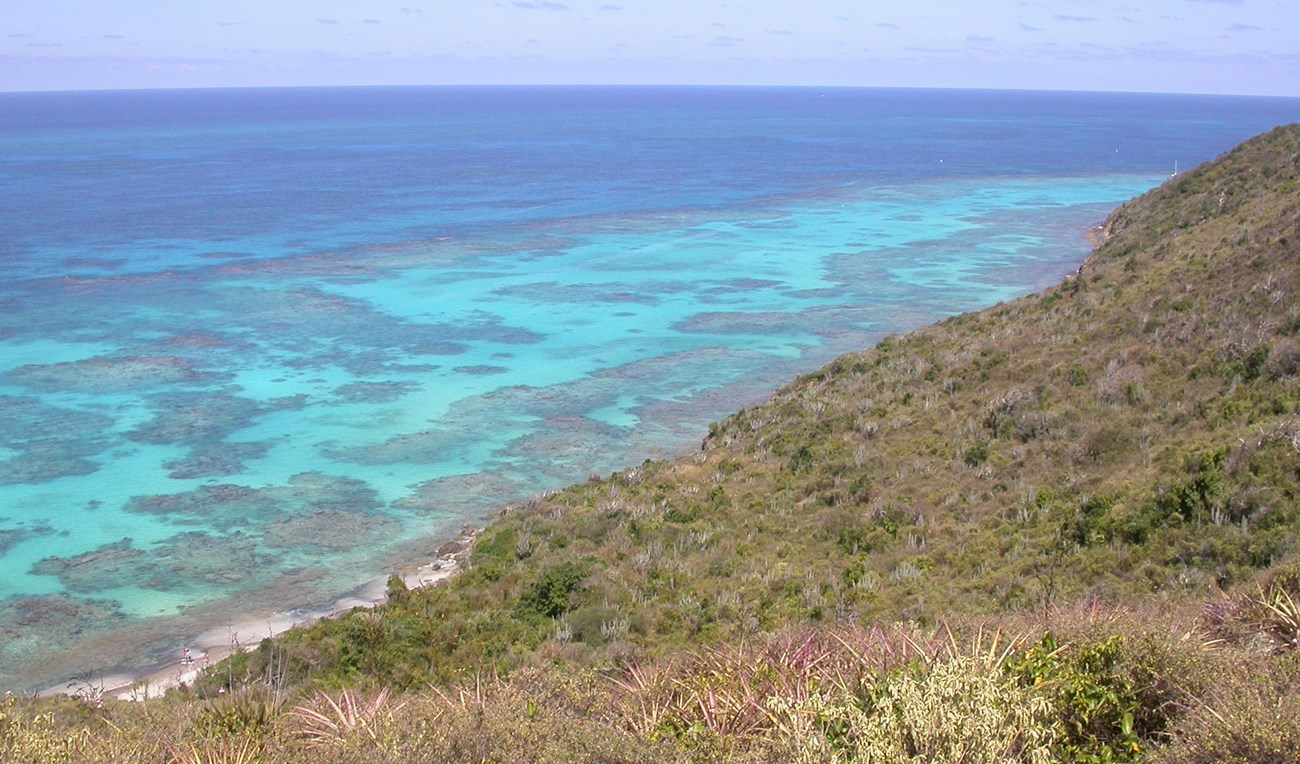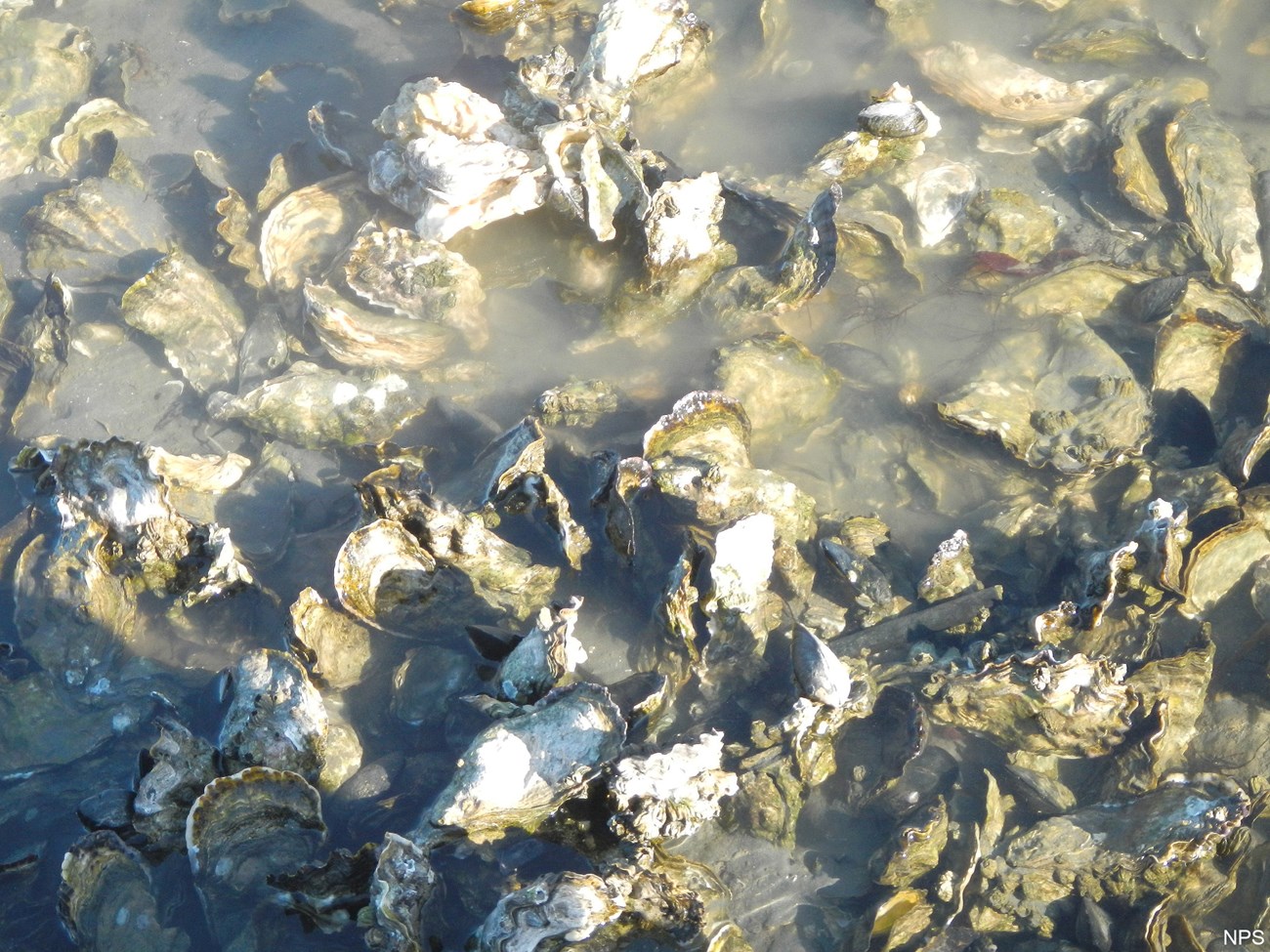Part of a series of articles titled Coastal Processes.
Article
Coastal Processes—Organic Activity

NPS photo by Rebecca Beavers.
A variety of seashore organisms, including mollusks, sponges, and sea urchins, can destroy rocks by physically boring into them. Their effectiveness is influenced by rock type: most sedimentary rocks are more susceptible than igneous rocks, for example. The relative importance of biological erosion is much greater along coasts characterized by low wave energies because abrasion and quarrying operate at moderate or low intensities.
Many organisms are either directly or indirectly responsible for the construction of some coastal landforms. The most spectacular example of direct construction is by corals and other carbonate-secreting organisms that form coral reefs. These structures can attain immense sizes, as in the case of Biscayne National Park, Florida. Coral structures here are part of a 241 km (150 miles) long chain of coral reefs extending roughly southwestward into the Caribbean. Likewise, oyster beds are formed when oyster larvae settle on a hard substrate and begin to reproduce. New larvae will begin to attach themselves to the surface of older or nonliving oysters, forming dense clusters that can grow to considerable size.

NPS Photo.
A range of plants are adapted to saltwater and these form salt-marsh communities in the intertidal zone along sheltered, muddy coasts. In the tropics mangroves are an important element in coastal vegetation. Together, with other halophytic (salt-tolerant) plants, mangroves play a geomorphic role by trapping sediment within their root systems and thereby aid the process of deposition. Similarly, plants stabilize coastal dune systems and contribute to sand accumulation.

NPS photo by Henry Crawford.
Related Links
- Biscayne National Park, Florida—[Geodiversity Atlas] [Park Home]
- Buck Island Reef National Monument, Virgin Islands—[Geodiversity Atlas] [Park Home]
- Point Reyes National Seashore, California—[Geodiversity Atlas] [Park Home]
Last updated: March 8, 2019
